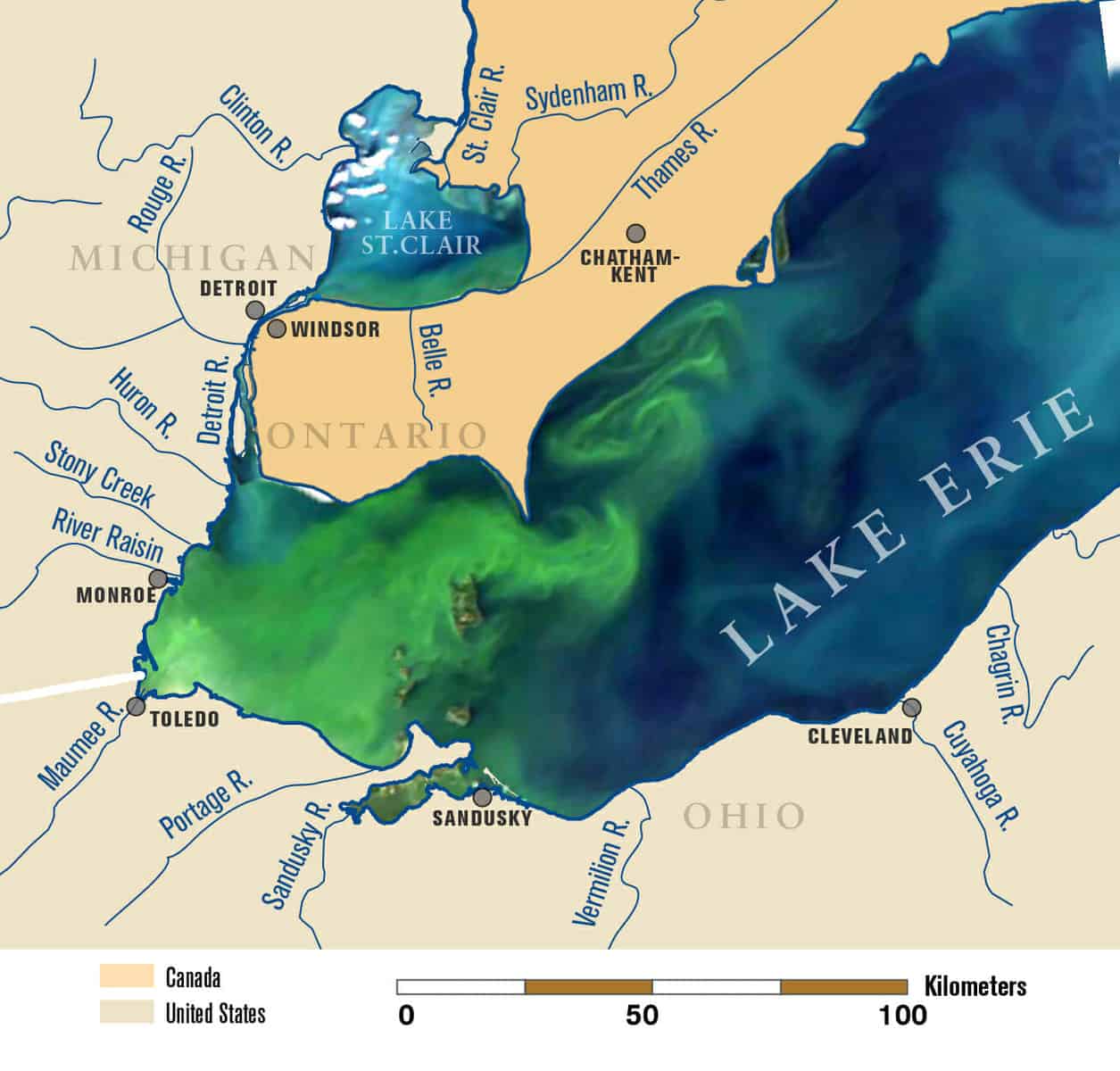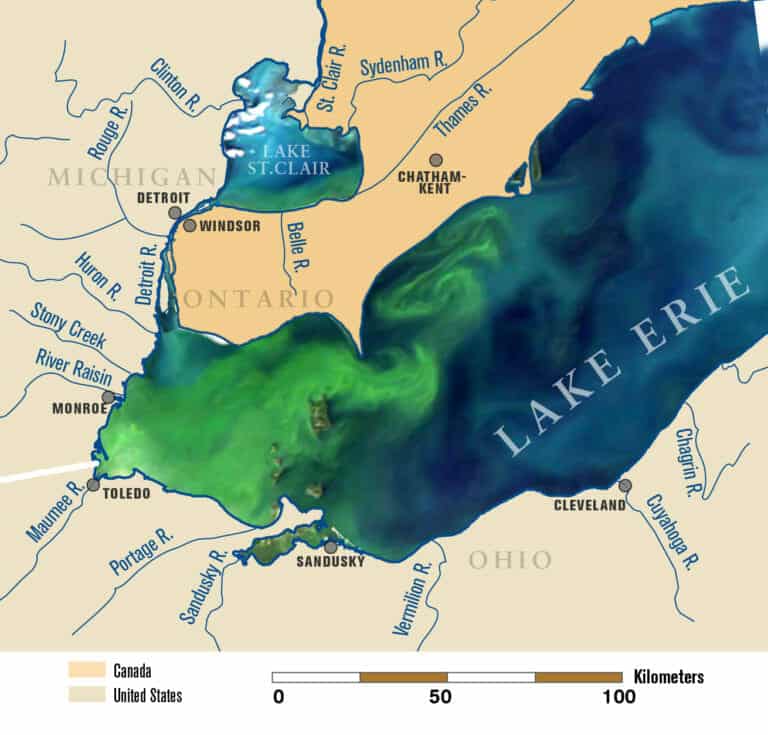At the 8th Binational Meeting of the Lake Erie Millennium Network, 125 scientists gathered at the University of Windsor in Ontario to hear experts weigh-in on the health of the southernmost, warmest and shallowest of the Great Lakes.
They presented research on everything from climate change, water quality, phosphorous, agricultural run-off, cyanobacteria (blue-green algae), hypoxia (deficiency in oxygen), cladophora (green algae) to ice, invasive species, sediment concentrations, and much, much more.
Lake Erie is the smallest of the Great Lakes by volume, and yet it has the highest population living along it’s shorelines, which makes it more vulnerable to pollution and many other problems than the rest of the Great Lakes.
The Canadian province of Ontario as well as the states of Ohio, Pennsylvania, New York and Michigan share its shoreline. Nearly 12 million people get their drinking water from Lake Erie.
Its primary inlet is the Detroit River.
Lake Erie is important not just for its drinking water, beaches, swimming and boating, but for its fish. The number of anglers on Lake Erie is greater than any other of the Great Lakes.
The lake, unfortunately, is famous for getting so polluted in the late 1960’s, one of its tributaries caught fire. The incident helped lead to the formation of the EPA, the Clean Water Act and other regulatory agencies and regulations.
Over the past fifty years, there have been incredible improvements to the quality of Lake Erie, but the scientists at the conference admitted they […]
Full article: Great Lakes Scientist says, “If We Lose The EPA, We Lose Lake Erie”



